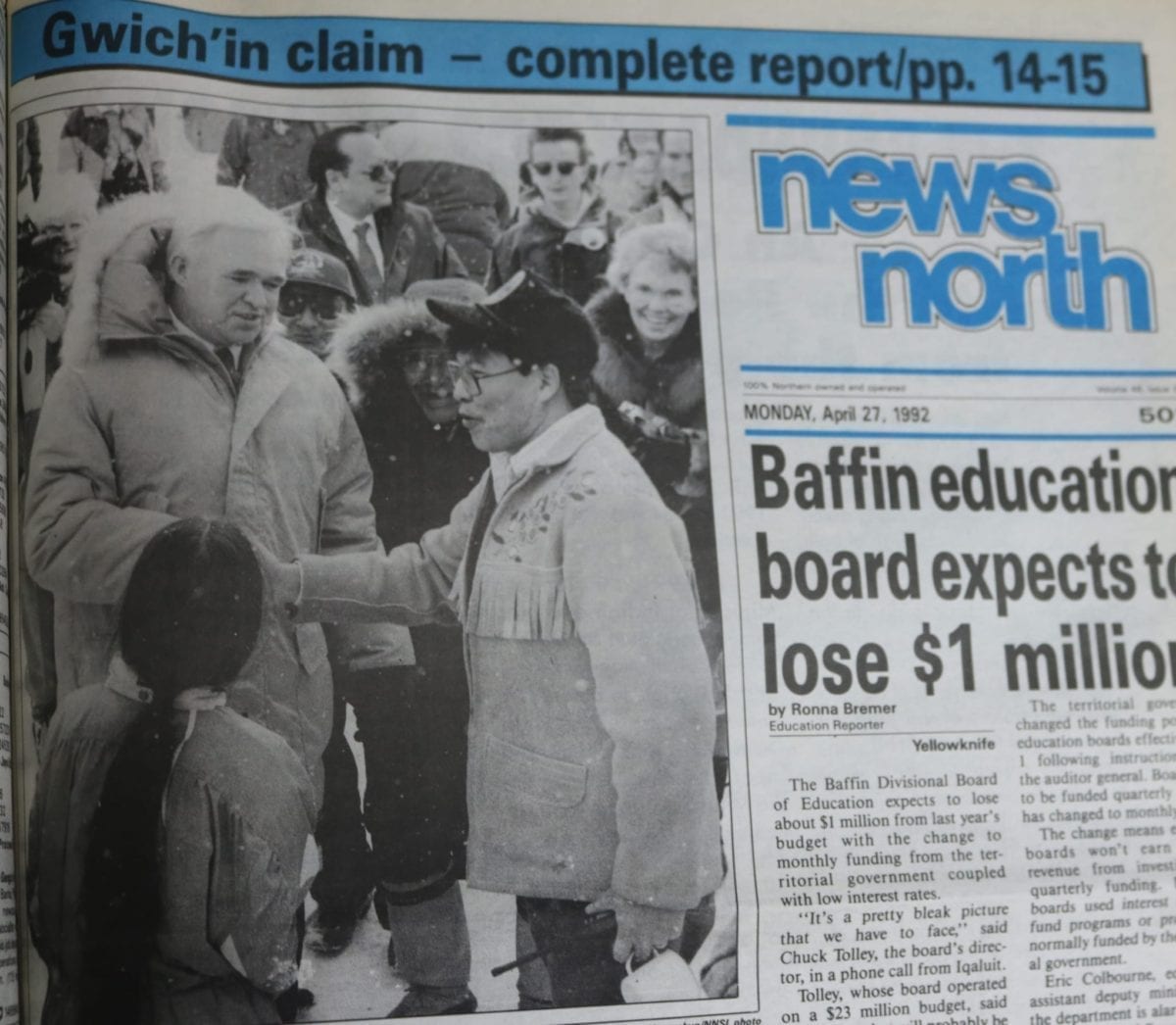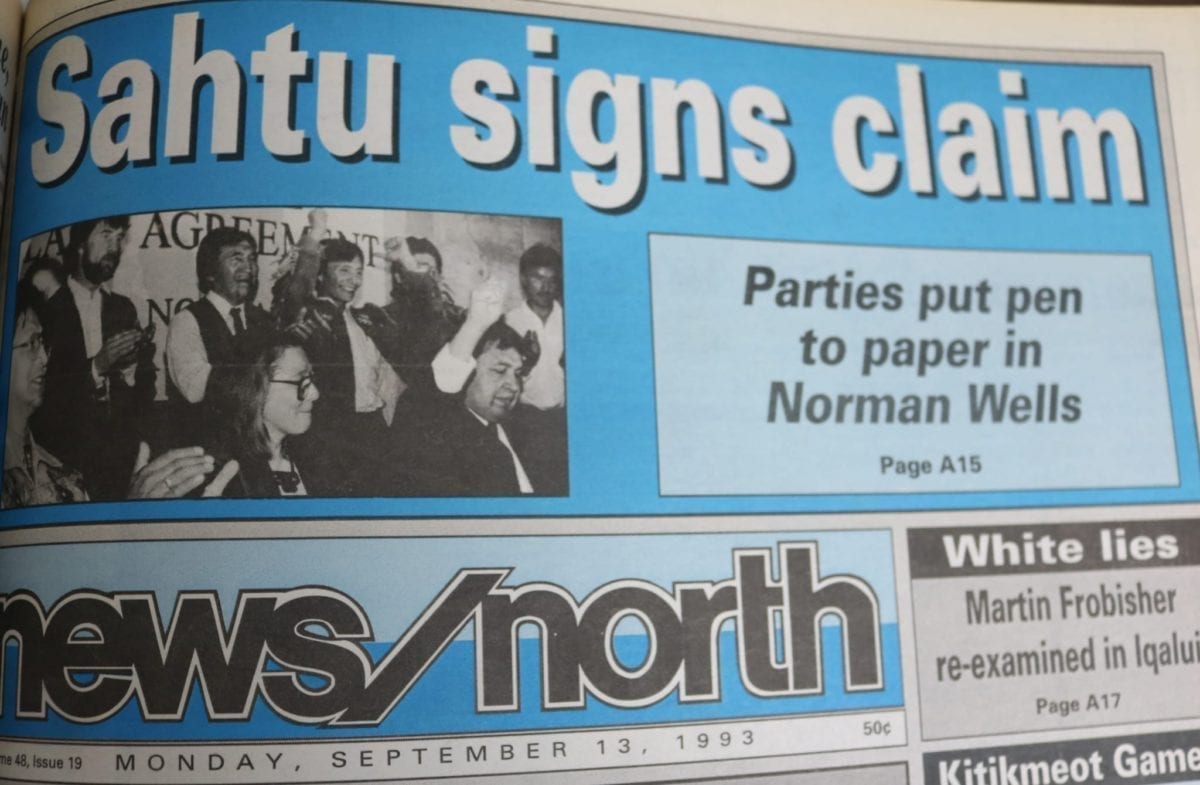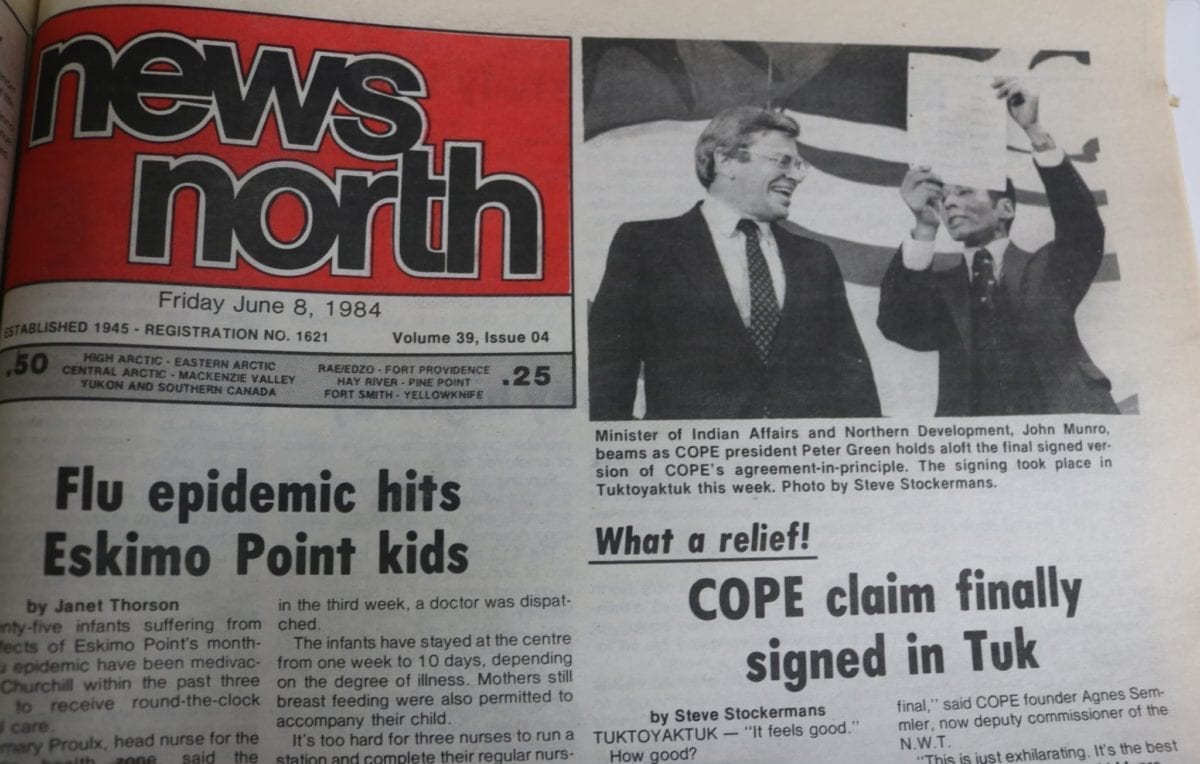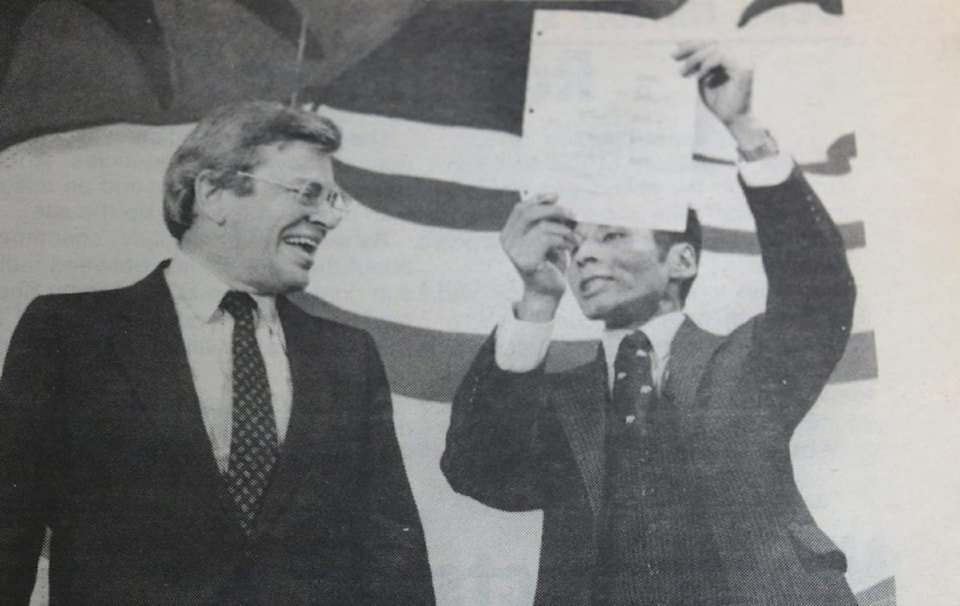If one wants to understand the current state of Indigenous self-governance in the Northwest Territories and the historical development of public government, a good place to start is the fact that Indigenous people in the Northwest Territories have historically avoided entering reserve systems like down south.
Other than two reserves - the K'atlodeechee and Salt River First Nation -- Indigenous people have been working with the territorial and federal governments to maximize legal rights over their historical land areas.
Based on the the 1966 Carrothers Commission, which established the Government of the Northwest Territories, the new territorial government's role was to strengthen the territorial council with a legislative assembly, premier, cabinet but also ensure that community governments were self-governing, receiving public service - all the while ensuring that chiefs and band councils were respected on their own lands.
There are currently two finalized self-government agreements in the Northwest Territories - that include the Tlicho Agreement, signed in 2005 and the Deline Final Self-Government Agreement, signed in 2015.
Much of the information in this primer comes courtesy of the GNWT's Department of the Executive and Indigenous Affairs.
Tlicho Agreement

photo from the NNSL Archives
The Tlicho made history in 2005 with the historic signing of the Tlicho Agreement - the first combined comprehensive land claim and self-government agreement in the Northwest Territories. The agreement between Dogrib Treaty 11 Council, the Government of the Northwest Territories and the Government of Canada was signed in Behchoko and set aside 39,000 square-kilometres of traditional Tlicho land in the North Slave - stretching from Great Slave Lake to the Nunavut border. The territory is home to about 3,500 largely Indigenous residents.
"We are in charge of our own destiny," said then newly elected Tlicho councillor Mabel Bohnet. "People want a change. It's exciting."
The agreement follows the path of the Nisga'a Treaty of northeastern British Columbia, signed in 1998. The Tlicho agreement gave the First Nation its own 13-member government.
The federal government intended to gradually allow the Tlicho the ability to enact laws and regulation in areas including education, health, social services and taxation.
The agreement also gave the new government $152 million in financial support over 14 years which was placed in a trust fund. The Tlicho also receive a share of royalties from mineral development in the Mackenzie Valley.
The agreement included a provision for the Tlicho to define its own membership and it established the Wek’éezhíi Land and Water Board and the Wek’éezhíi Renewable Resources Board.
The creation of the new government, made up of a grand chief, four regional chiefs and eight councillors today oversees the Tlicho communities of Behchoko, Gameti, Whati and Wekweeti.
Deline Final Self-Government Agreement
The Deline Final Self-Government Agreement was signed in 2015 and created a new governing structure called the Deline Got'ine Government (DGG). The DGG represents all residents of Deline and is responsible for many of the functions of a municipal government. It also has many of the same law-making powers as the GNWT.
The agreement stemmed from the Sahtu Dene and Metis Comprehensive Land Claim Agreement, signed in 1993, which allowed for communities in the Sahtu to negotiate self-government agreements.
Inuvialuit Regional Corporation
In the far North of the Northwest Territories, the Inuvialuit Regional Corporation(IRC) oversees much of the governance of the Inuvialuit Settlement Region based on the signing of the Inuvialuit Final Agreement on June 5, 1984.
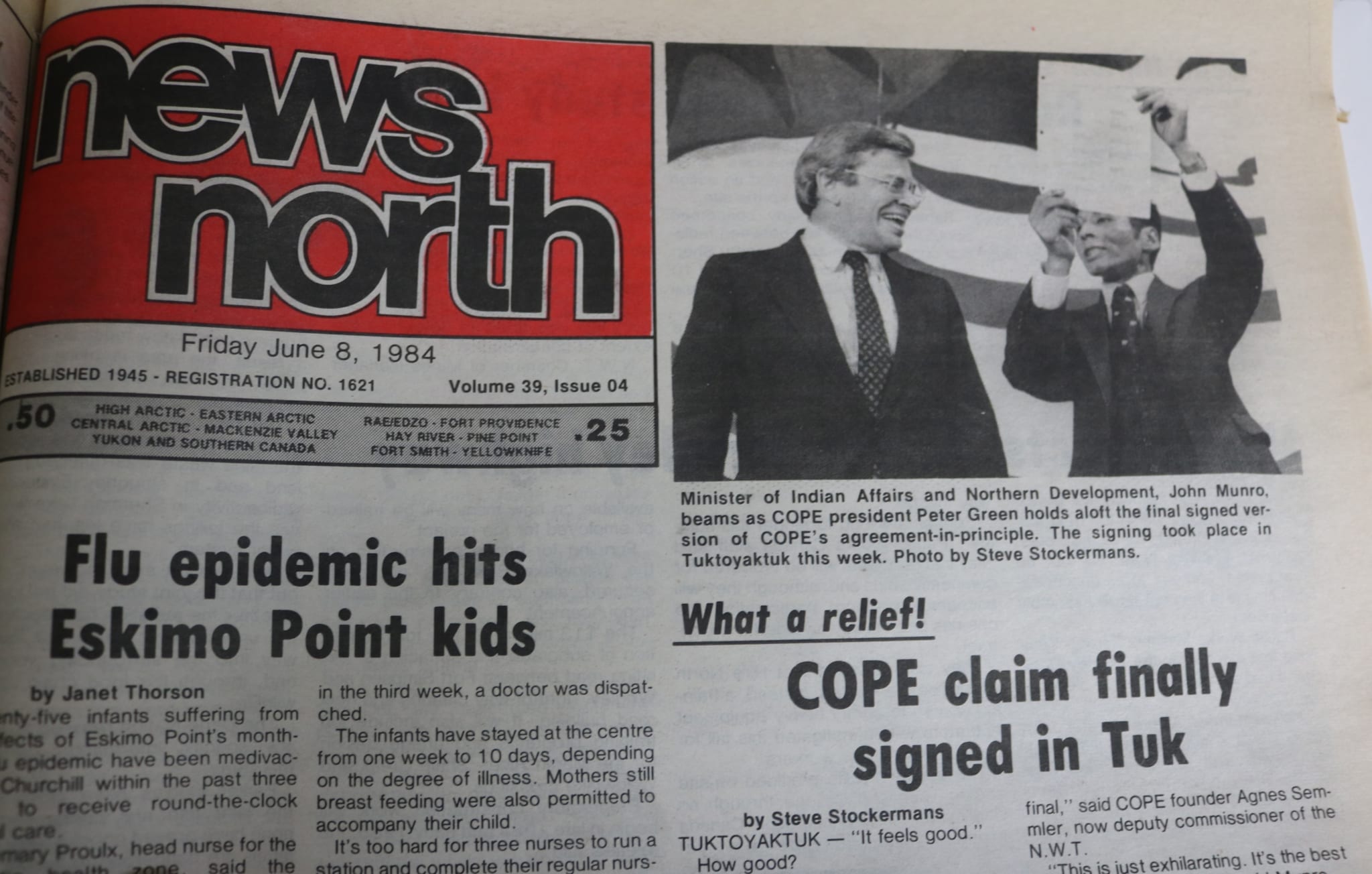
photo sourced from News/North Archives
In 2019, the IRC celebrated the 35th anniversary of the final agreement. It is distinct among all other agreements in the NWT, because it was the first comprehensive land claim agreement north of the 60th parallel and only the second in Canadian history.
Among the highlights of the agreement is that it gave Inuvialuit managerial control over the area’s economy and environment while offering a critical step toward full self-governance.
The region stretches across 91,000 square kilometres and offers beneficiaries control over land, wildlife management and money as well as control over sub-surface minerals.
"We are what we are and we are not afraid of the future,"said Nellie Cournoyea, former premier and Nunakput MLA at the time. "This is our land and our country, and together we have to build it. The Inuvialuit never do things the easy way. If we are going to be part of Canada, we're going to be totally part of Canada."
Within the Inuvialuit Settlement Region exist six main communities that include the
Town of Inuvik (3,243 people), Hamlet of Tuktoyaktuk (898 people), Hamlet of Aklavik (590 people), Ulukhaktok (396 people), Hamlet of Paulatuk (265 people), and Sachs Harbour (103 people).
Gwich'in Settlement Area
The Gwich'in Tribal Council, neighbours of the Inuvialuit, celebrated the 25th anniversary of its historic agreement in 2017 and are looking forward to marking their 30th year in 2022.

The signing of the Gwich'in Comprehensive Land Claim Agreement on April 22, 1992 between the Gwich'in Tribal Council, GNWT and federal government deals exclusively with land claims. The agreement was considered historic for its time and saw the neighbouring Inuvialuit Final Agreement as well as the James Bay and Northern Quebec land claim agreement of the late 1970s as precedents.
At the time, the deal included the Gwich'in receiving a non-taxable $75 million payment (1990 dollars) paid out over 15 years, title to almost 24,000 square kilometres of land in the NWT and Yukon, as well as subsurface rights of more than 6,000 square kilometres.
The Gwich'in Settlement Region, which includes a geographic portion of Yukon, is made up of four communities, two of which - Aklavik and Inuvik - are also included in the Inuvialuit Region. The Gwich'in communities are: Hamlet of Aklavik (590 people), Hamlet of Fort McPherson (700 people), Town of Inuvik (3,243 people), and Chartered Community of Tsiigehtchic (172 people)
Sahtu Region

photo sourced from NNSL archives
In 1993, the North’s fourth land claim following the Inuvialuit, Gwich'in, and Inuit of Nunavut, was signed in Norman Wells. Called the Sahtu Dene and Metis Comprehensive Land Claim Agreement, it gave the Sahtu Dene band councils and Metis locals of the region control over 41,437 square kilometres of land as well as 1,813 square kilometres of sub-surface minerals they were free to develop.
They were also awarded $75 million over 15 years and received the right to a share of Ottawa’s resource royalties from the Mackenzie Valley, south of the Inuvialuit Settlement Region, including Esso Resources' Norman Wells oilfields. The agreement also gave the Sahtu people the right to participate in land, environment and wildlife management, including the right to hunt, fish and trap in the settlement region.
Stephen Kakfwi, who was the MLA for the Sahtu and territorial minister of aboriginal affairs, as well as a beneficiary of the agreement, gave the document high praise when it was signed.
"This is a historic occasion for all of us," he said. "If 1921 (signing of Treaty 11) is remembered by all of our people as an historic day, so will this day."
In the Sahtu region are five communities that include Town of Norman Wells (778 people), Settlement Corporation of Colville Lake (129 people), Chartered Community of Deline (533 people), Chartered Community of Fort Good Hope (516 people), and Hamlet of Tulita (477 people).
The agreement allowed the Sahtu communities to pursue self-government agreements of their own. So far, only Deline and its Deline Got'ine Government has signed a self-governing agreement.
South Slave
In the South Slave region, or south of Great Slave Region are six communities that include Fort Smith, Hay River, Kakisa, Enterprise, Fort Resolution, and K’atlodedechee First Nation.
Overlapping the South Slave and North Slave regions is the ongoing negotiating process between the Akaitcho Dene First Nations (ADFN), the Government of Canada, and the Government of the Northwest Territories (GNWT).
Outstanding agreements
There are a number of agreements that have been continued in the Northwest Territories.
Deh Cho Agreement
The Deh Cho Agreement is among those in the territory which have been ongoing for a number of decades, and from the perspective of the Deh Cho First Nations, seeks to assume control over GNWT-run services like housing, health and social services, education, justice and transportation.
The area, which is in the western portion of the NWT, is made up of Fort Simpson, Fort Providence, Kakisa, Sambaa K’e, Fort Liard, Jean Marie River, Nahanni Butte, and Wrigley.
The Deh Cho are asking for control of about 50,000 square kilometres of land in their land claim negotiations.
Negotiations for self-government through the Dehcho Process are in the early stages.
Northwest Territory Metis Nation
Most members of the Northwest Territory Metis Nation live in the South Slave communities of Fort Smith, Hay River and Fort Resolution.
The NWTMN have been working toward self-government since the signing of the NWTMN Framework Agreement in 1996..
Akaitcho Territory Government
The Akaitcho Territory Government represents the communities of Fort Resolution, Fort Smith, Yellowknife, Dettah, Ndilo and Lutsel Kʼe. Negotiations to find an agreement on land, resources and self-government between the territorial, federal and Indigenous government have been ongoing for almost 20 years.
The Indigenous government is seeking control over about 62,000 square kilometres of traditional territory.
Multiple sources state that the signing of an Akaitcho agreement-in-principle could be happening soon.
Sahtu Dene and Métis of Colville Lake, Norman Wells, Fort Good Hope and Tulita
The Sahtu Dene and Metis Comprehensive Land Claim Agreement (SDMCLCA) calls for the negotiation of a self-government agreement with the Sahtu Dene and Métis of Colville Lake, Norman Wells, Fort Good Hope and Tulita.
These standalone self-government agreements are still being negotiated.
- with notes from Ezra Black
